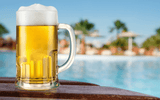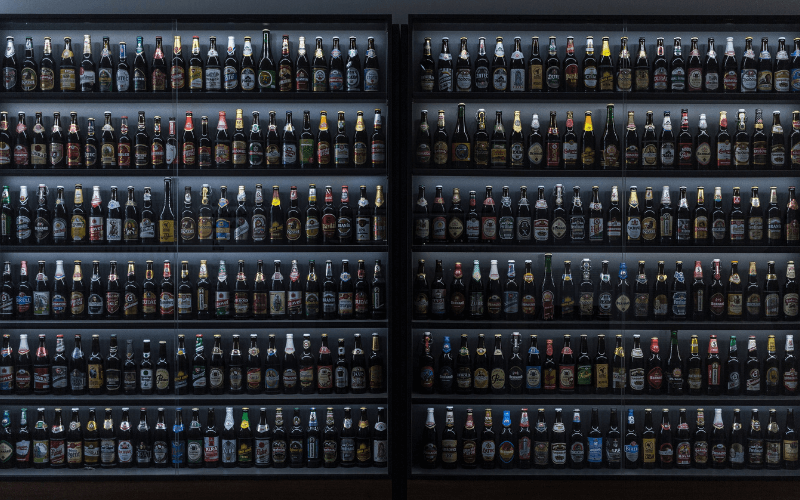
What Is Light Beer? Brewing Techniques And Best Brands To Try


Nowadays, people are always looking for ways to cut down on their calorie intake. Of course, this includes drinks! Light beer is one such beverage that you can find in stores across America- but what exactly makes it 'light'?
Light beer is made in such a way that the total alcohol concentration, calorie content, or both are reduced. This makes other people think that it is healthier. But is it really?
This article will answer those questions, provide an overview of this beverage, and tell you where you can find the best brands on the market today.
Light beer is a more mild version of the traditional brews. It's usually lower in alcohol content, calories, and carbohydrates but still provides plenty of flavor for those who love their beverages on tap or cold ones!
These drinks are sometimes misunderstood to be nonalcoholic, flavorless, bodiless, carbonated, or lacking in scent and taste richness. Light beers were initially designed to have a lower ABV so that people could drink many without becoming drunk.
They were frequently made for casual use. Some refer to light beers as "lawnmower beers" in allusion to the practice of drinking one or two after a day of yard work. People began to seek low-calorie versions of beer throughout time, and low on calorie beers appeared as a result.

Light beer dates back to the 1940s when the Coors Brewing Company launched Coors Light, a beer that was lighter in body and calories than the company's flagship lager.
This brand was dropped at the start of WWII, only to be brought back in 1978. Gablinger's Diet Beer, designed by a scientist named Joseph Owades, was manufactured by the Rheingold Brewery in 1967 for the dieting public.
Light beer's creator, Owades, worked out the technical aspects of brewing the beverage and extensively studied how yeast reacts with malt starches. He discovered an enzyme in yeast that eliminated a lot of the starch while keeping the beer's characteristics.
Owades' employer at Rheingold allowed him to share the beer formula with a buddy at the Meister Brau brewery in Chicago; so they were the next brewery to introduce a light beer with Meister Brau Lite.
In 1973, Miller Brewery purchased the Meister Brau franchise and rebranded Meister Brau Lite as Miller Lite. Miller Lite became the first publicly accessible light beer in the United States thanks to a successful advertising campaign that famously promised: "Tastes great, less filling."
In reaction to Miller Lite, Coors Light was introduced in 1978, followed by Bud Light in 1982. Bud Light had overtaken Coors Light as the most popular beer brand in the United States by the late 1990s.
By this time, the low-carbs light beer, which is brewed with extrinsic enzymes introduced to the mash to break down nearly all carbohydrates into fermentable sugars, was also introduced.

Beers with a low alcohol content get negative feedback from drinkers because they're frequently seen as bland. However, low-ABV beers may still be flavorful and enjoyable if prepared appropriately. Brewers can pick from six different techniques to make light beer.
This method is the most obvious strategy to reduce the alcohol content in beer. Reduce the number of grains or malts in your recipe. The fermentable carbohydrates in the grains produce the alcohol, reducing the malt quantity and reducing the ultimate alcohol percentage.
This method is mixing ordinary beer with water to dilute the beverage to the appropriate calorie and alcohol amount for a light beer. This process is the simplest one.
Some brewers use enzymes during the mashing or fermentation process to break down as many carbs as possible into simple sugars. These sugars are processed into alcohol and carbon dioxide. The alcohol is then diluted with water to produce a low-carb beer.
Mashing is converting grains into sugars and proteins that are brewed into beer by combining them with water at a required temperature. More of the grains' carbohydrates are broken down into simple sugars by prolonging the mashing process.
The fewer carbs in the beer, the fewer calories it contains. The obtained beer is then lightened by water dilution.
Brewers can also make beer bottles smaller in order to deliver fewer calories per bottle. Reducing the volume of the same kind of beer would also reduce its calorie content.
Another way to make a beer with a low ABV is to brew it at a higher final gravity than usual. A lower final gravity indicates dry or crisp flavors, whereas a higher final gravity indicates sweet or malty flavors.
The original gravity of wort is a measurement of how much sugar is present before it is fermented. When fermentation is finished, the final gravity indicates how much sugar is left behind. The extent of the difference between original and final gravity may be used to quantify the amount of alcohol in a beer.

Beer with less than 1.2% alcohol content is known as low-alcohol beer. It has a reduced calorie content. Half a pint of low-alcohol beer, for reference, has about 60 calories, compared to more than 100 calories in a standard beer.
On the other hand, alcohol-free beer has less than 0.5% alcohol level. Typically, beers have an alcohol content of 4-6%.
Lastly, low-carb beer became popular in the 1990s as a lighter beer version. Low-carb beers typically have 2 grams of carbs every half-pint, whereas regular beers have roughly 11 g of carbohydrates. Low-carb beer is merely brewed to eliminate carbs to have the same amount of alcohol as regular beer.
Beer, like wine, is considered to provide several health advantages. Light beer is marketed as a calorie and ABV reduced version of regular beer.
The lower calorie and carbohydrate content of light beers are beneficial for some. However, light beer drinkers tend to drink more than normal beer drinkers. Due to the light beer's low alcohol level, you'd have to drink a lot of it to acquire the desired drunken effect.
It's also crucial to remember that there's no set definition for how many calories are in a beer. Depending on the number of calories in ordinary beer, what appears to be a low caloric level in one brand of beer may be greater in another.
Overall, light beer is not inherently healthier, despite its reduced calorie content. But if you believe that consuming less alcohol would be more beneficial for you, choose a low-alcohol or non-alcoholic beer. Remember to drink responsibly, regardless of whatever beer you select.

Michelob Ultra is one of the lightest beers on the market, with only 95 calories per bottle and 2.6 grams of carbs per serving. It also comes with the Pure Gold variant, which only has 85 calories and 2.5 grams of carbs.
Natural Light is a light lager brewed in the United States. It has a light texture and beer-like flavor. It's also reasonably priced, making it a popular party choice. It has 4.2%, 95 calories, and 3.2 grams of carbohydrates.
Miller Lite is a famous low-calorie beer with 96 calories and 3.2 grams of carbs. It has a crisp flavor that isn't too diluted with water.
So-Lo boasts vibrant citrus and floral scent, as well as a sharp, hoppy flavor that is well balanced. With only 3% ABV and 98 calories, this IPA is a smart choice for a light beer.
Yeungling Light Lager has a crisp taste that works well with everything. It has low-level alcohol at 3.8%, carbs of 3.2 grams, and 99 calories only.
The tastes of Heineken Light are identical to those of the original. It's bright, fruity, and sweet, with a hint of bitterness. Enjoy a calorie-free beverage with a lighter feel.
Corona Light has a little more yellowish hue look that is pleasing and striking. Furthermore, Corona Light's original flavor is somewhat less bitter than other alcoholic beer beverages on the market.
Sapporo Premium Light has a lighter body and a smoother finish than Sapporo Premium, with a superb, balanced taste. It's a great session beer since it's easy to drink without sacrificing flavor.
Per 12-ounce can of Busch Light, there are 95 calories, 3.2 grams of carbohydrates, and 0.7 grams of protein. Busch Light has a higher alcohol content than ordinary Busch. However, Busch Light has a 4.5% alcohol by volume, while Bush has a 4.3% alcohol by volume.
Coors Light is a must-try for beer-drinking adults who don't want their beer to taste like beer. A single bottle of this light beer has 102 calories, 5 grams of carbohydrates, and less than 1 gram of protein.
IPA or Indian Pale Ale is a pale ale type that accentuates hop tastes and scents. Modern American IPAs typically have an alcohol content of 6 to 7%.
The hop flavor is pretty direct, emphasizing the fruitiness, bitterness, and floral taste profile. IPAs are best served cold and fresh despite it being heavily hopped.
Beers and other alcoholic beverages labeled "lite" have lower calorie or alcohol content. Whether lager, ale, or IPA, any beer style can be classified as a light beer if the calorie content is lower than the ordinary variety.
Beer brands generally use the term “lite” to promote light variants of beers.
Various low-calorie beers also have low alcohol by volume percentage. There is Budweiser Select with 55 calories and 2.4% ABV, Molson Ultra with 70 calories and 3% ABV, and Moosehead Cracked Canoe with 90 calories and 3.5% ABV to name a few.
Light beer is not healthier than other types of beer, but it does have reduced calories and alcohol content. If you are looking for a drink that’s light on the calorie count or wants to cut back on your drinking without cutting out alcohol entirely, this light version might be the right choice.
We hope we have answered your queries and provided some insight into this beverage. Share your comments with us!


